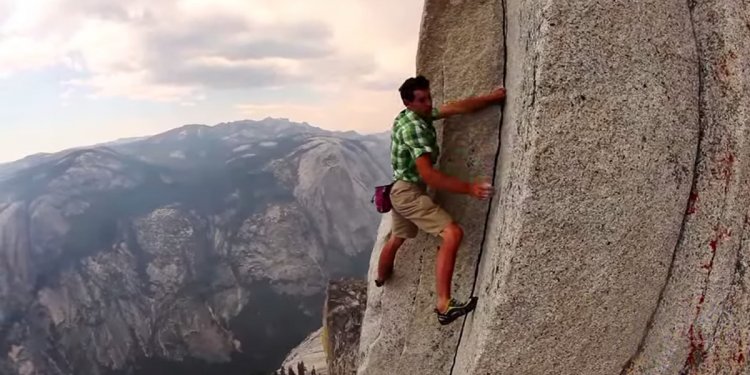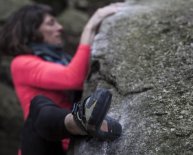
Rock Climbing, No Harnesses
Hanging by his fingertips from a 100-foot ledge was a relatively common occurrence for rock climber John Bachar. What made him extraordinary was that he did so without a safety net. In rock climbing, that meant he had no harness or ropes to hold him if something went wrong.
After spending 30 years climbing without ropes, the 52-year old Bachar fell to his death on July 5 while climbing a rock formation near his home in Mammoth Lakes, Calif.
It was a route he had taken dozens, if not hundreds, of times.
His death shocked and saddened the tight-knit climbing community. Tributes and testimonials have poured in to online forums. But there is also much debate about whether his style of free-solo rock climbing was worth the risk.
"Some people say that he was doing what he loved to do and they're proud of him for sticking with it, " said Eric Waldron, a climbing instructor with Eastern Mountain Sports. "Some people thought ... it was ridiculous. It was inevitable that he was going to fall off eventually."
Bachar began climbing ropeless in the 1980s and was known for his incredible agility and strength. He could do one-arm pull-ups holding a 12.5 pound weight in his other hand. With a shock of blonde hair, shorts and tube socks, he climbed the most difficult rock formations with seeming ease.
Bachar was so sure of his singular ability that in 1981 he issued a challenge: He offered $10, 000 to anyone who could keep up with him on a rock for a single day, ropeless.
No one dared.
"He just wanted to push it, " said Richard Dena, an amateur boulder climber. "He took it to a level no one had before. I think that's pretty cool."
In an e-mail to ABC News, Bachar's father, John Bachar Jr., described his son's feats as "without peer."
"I've intimately followed every step for 40 years, " wrote Bachar Jr. "Can you imagine anyone doing 1.5 MILLION FEET of unroped climbs up to the level of 5.13 difficulty?"
In a documentary on his life, "Bachar: Man, Myth, Legend, " Bachar acknowledged the inherent risk.
"If I do something. I have to do it all out or not do it, " he said. "You do have to take life with a certain amount of risk."
Even after he broke his neck in a 2006 car accident, Bachar recovered and continued his daring climbs.
He was a purist - priding himself on respecting nature and not leaving the bolt marks that come with advanced rigging a rock formation for a climb. He certainly left a legacy on his beloved sport.

















